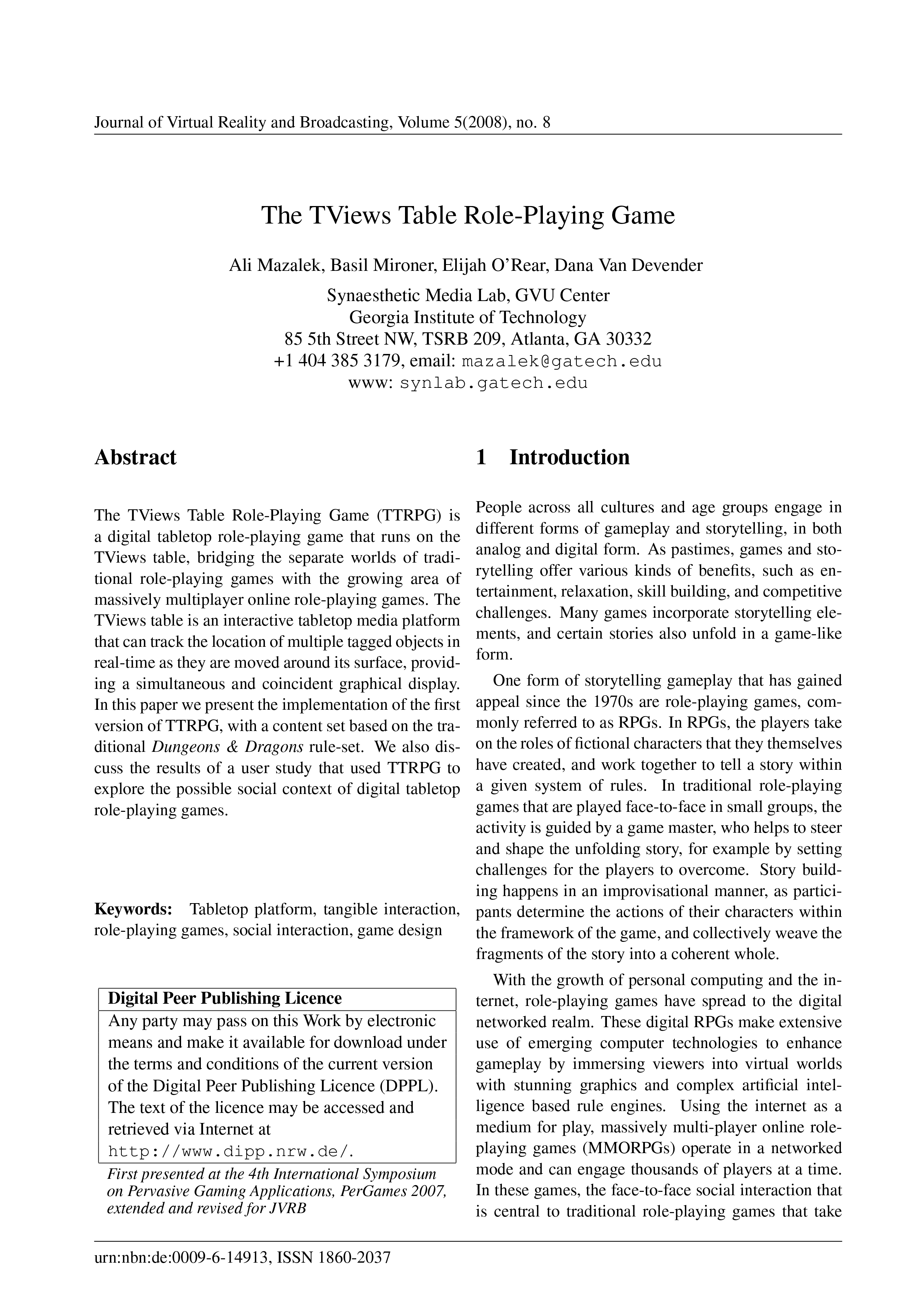The TViews Table Role-Playing Game
DOI:
https://doi.org/10.20385/1860-2037/5.2008.8Keywords:
Game Design, Role-Playing Games, Social Interaction, Tabletop Platform, Tangible InteractionAbstract
The TViews Table Role-Playing Game (TTRPG) is a digital tabletop role-playing game that runs on the TViews table, bridging the separate worlds of traditional role-playing games with the growing area of massively multiplayer online role-playing games. The TViews table is an interactive tabletop media platform that can track the location of multiple tagged objects in real-time as they are moved around its surface, providing a simultaneous and coincident graphical display. In this paper we present the implementation of the first version of TTRPG, with a content set based on the traditional Dungeons & Dragons rule-set. We also discuss the results of a user study that used TTRPG to explore the possible social context of digital tabletop role-playing games.
Published
2008-07-25
Issue
Section
PerGames 2007





